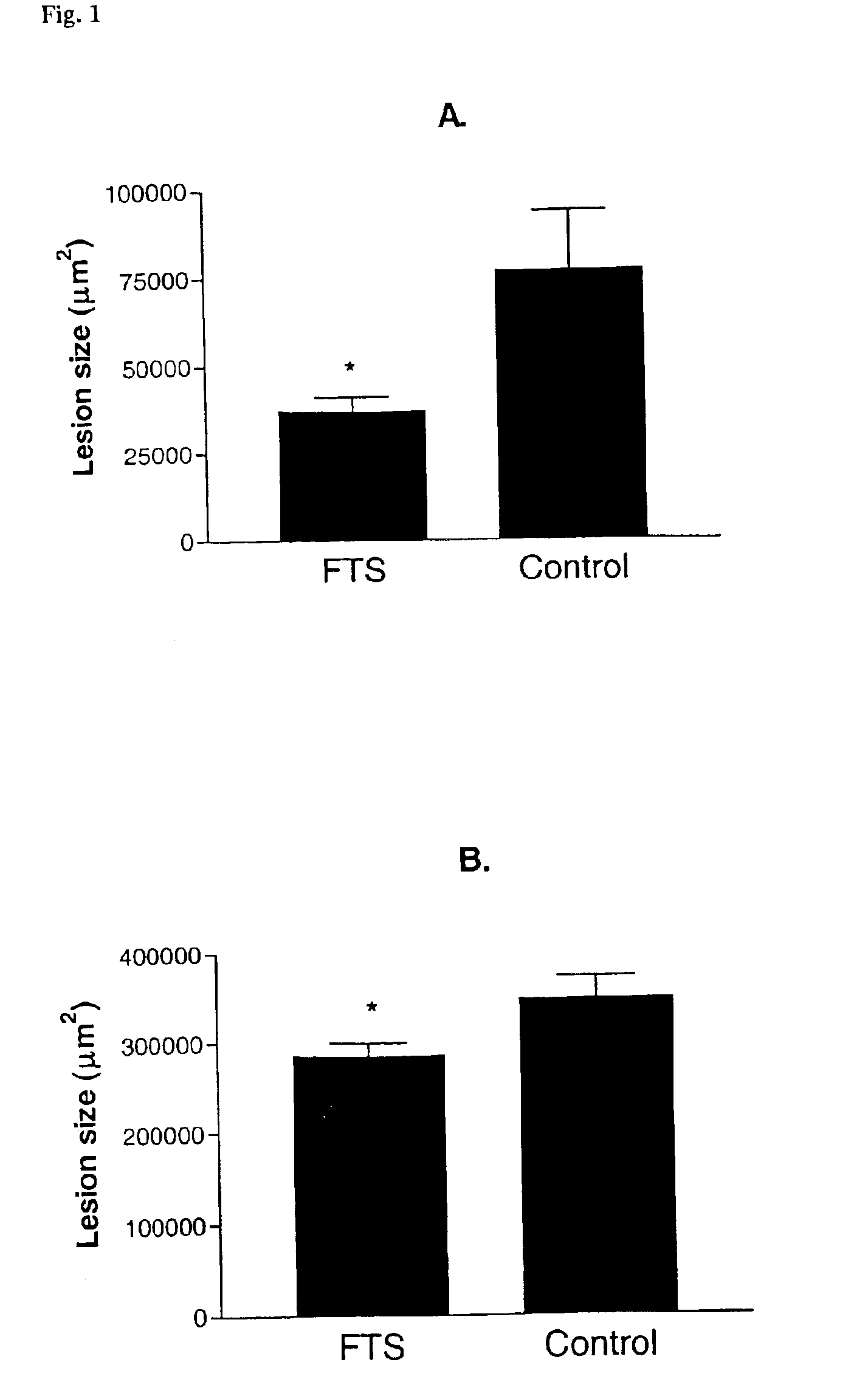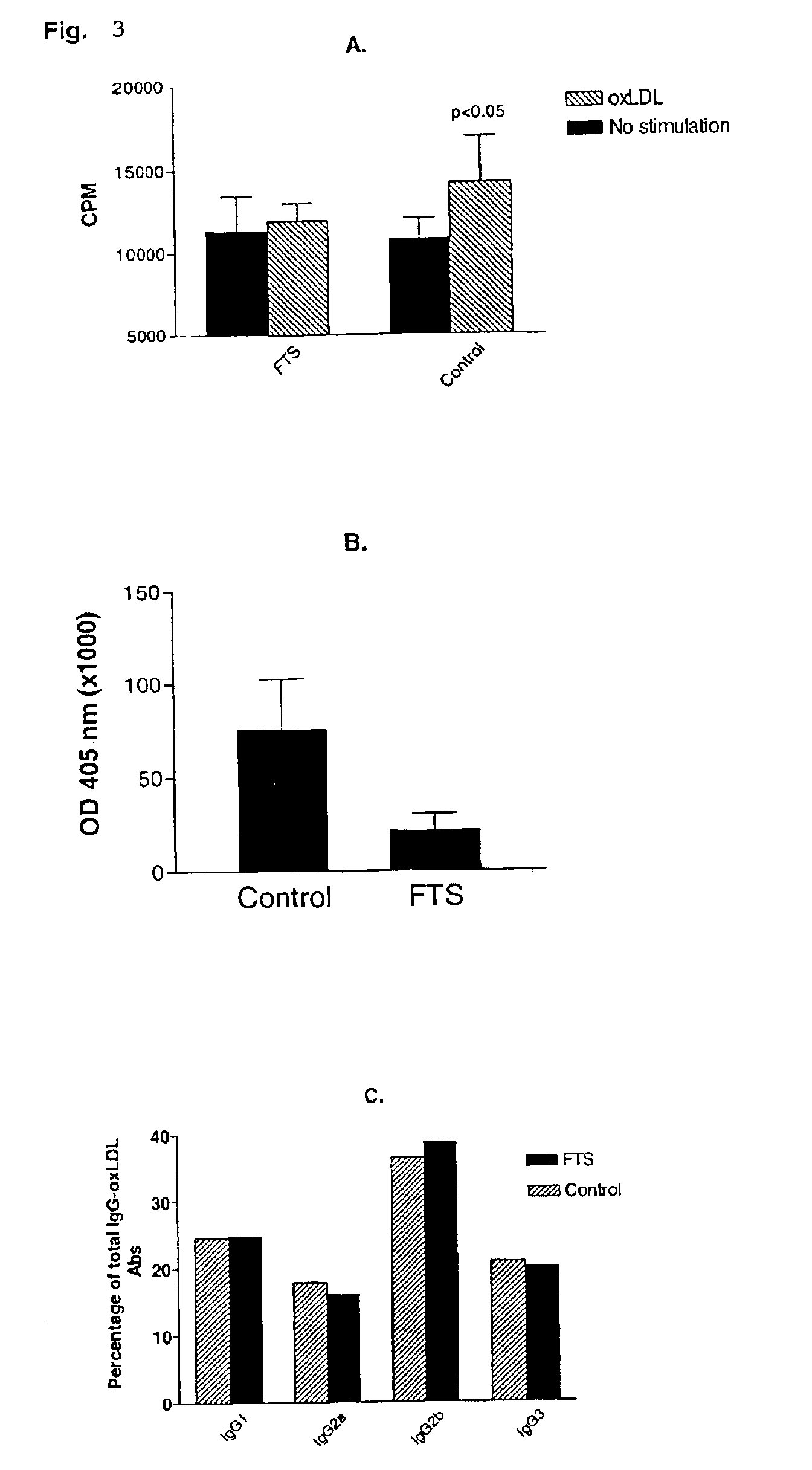Treatment of post-angioplasty restenosis and atherosclerosis with Ras antagonists
a technology of ras antagonists and restenosis, applied in the direction of biocide, plant growth regulators, animal husbandry, etc., can solve the problems of not being expected, using fts and similar active compounds, etc., and achieve the effect of reducing cancer cell growth and affecting cancer growth
- Summary
- Abstract
- Description
- Claims
- Application Information
AI Technical Summary
Benefits of technology
Problems solved by technology
Method used
Image
Examples
example 1
Functional Inhibition of Ras by FTS Attenuates
Atherosclerosis in Apolipoprotein E Knockout Mice
[0046]The following example demonstrates the efficacy of Ras antagonist of the present invention, FTS, to inhibit or reduce early and advanced atherosclerotic lesions. The experiments were conducted on atherosclerosis-prone mice deficient in apolipoprotein E and which were fed normal and high-fat diets.
Methods
Animals
[0047]Apo-E deficient mice on a C57BL / 6 background (24-25) were purchased from the Jackson Laboratories and grown at the local animal house. Mice were either fed normal chow-diet containing 4.5% fat by weight (0.02% cholesterol) or a Western-type diet containing 42% of calories from fat, 43% from carbohydrates, 15% from protein (TD 96125, Harlan Teklad).
Experimental Design
[0048]In the first experiment, the effect of FTS was studied on fatty streak formation (early atherosclerosis) in apoE mice. For this purpose, 4 week-old male apoE mice were injected I.P. with FTS (5 mg / Kg wei...
example 2
The Effect of FTS on Intimal Hyperplasia in a Model of Carotid Balloon Injury in the Rat
[0102]The aim of this experiment was to investigate the effect of FTS on intimal hyperplasia in a rat carotid balloon injury, as an indication of whether FTS can ameliorate restenosis by reducing smooth muscle cell proliferation and migration. The results indicate that FTS appears to be a potent inhibitor of intimal hyperplasia.
[0103]Atherosclerosis and restenosis are two processes that involve cellular proliferation that eventually lead to functional narrowing of blood vessels causing considerable morbidity and mortality (1-4). The formation of neointimal hyperplasia following balloon denudation is thought to involve proliferation and migration of medial smooth muscle cells or modified adventitial fibroblasts (4, 5, 6, 7). In recent years, evidence has also accumulated pointing towards the involvement of the immune system in atherosclerosis and restenosis, as manifested by the local presence of ...
PUM
 Login to View More
Login to View More Abstract
Description
Claims
Application Information
 Login to View More
Login to View More - R&D
- Intellectual Property
- Life Sciences
- Materials
- Tech Scout
- Unparalleled Data Quality
- Higher Quality Content
- 60% Fewer Hallucinations
Browse by: Latest US Patents, China's latest patents, Technical Efficacy Thesaurus, Application Domain, Technology Topic, Popular Technical Reports.
© 2025 PatSnap. All rights reserved.Legal|Privacy policy|Modern Slavery Act Transparency Statement|Sitemap|About US| Contact US: help@patsnap.com



